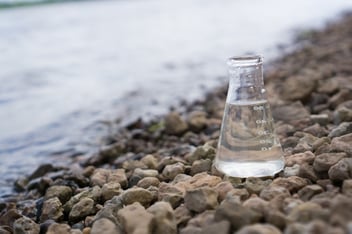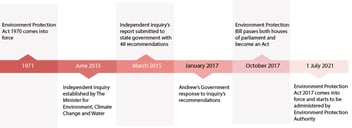In Brazil, empowering the community is helping to develop sustainable water management
Brazil is well known worldwide for its abundance of natural resources, especially its water. Unfortunately, its water source is not being used as sustainably as it could be.
According to IBGE, the Brazilians Institute of Geography and Statistics,14.2% of the population in Brazil don’t have access to water pipes and 34% are unable to access the sewerage network. For the 66% who have access to the sewerage network, just 46% of collected sewage is treated, and problems related to lack of sanitation were responsible for 73,400 deaths over a period of 10 years.
Furthermore, the water infrastructure has not been designed well to integrate into environments such as urban spaces, including parks or wetlands which the community would otherwise be able to interact with and intimately understand the water cycle.
In response to the situation a 2010 Federal Decree obliged cities with over 20,000 inhabitants and tourist towns to implement a Sanitation Strategy according to the National Health Foundation (FUNASA) standard. Alto Paraiso de Goiás, which has 6,885 inhabitants, was included as one of these towns.
Process to sustainable water management plan
Alto Paraíso is placed in the upper Tocantins River, as part of the Amazon basin. It is the watershed of the Paraná and Maranhão Rivers basins, and the second-largest region in water availability, with 13,624 m3/s average flow, equivalent to 9.6% of the total volume in Brazil.
Responding to the Federal Decree, in 2011 the Alto Paraiso City Council endorsed a Sanitation Project per FUNASA standards and was funded by the Federal Government. Contrary to due course, there was no public consultation during the process.
As the Local Environmental Defence Council (COMDEMA) questioned the Sanitary Project endorsed by the municipality, a study group was created to oversee the project and its irregularities and presented the council with sustainable solutions to correspond with the environmental importance of the region.
Sustainable water management seminar
The project was an initiative of the Environmental Defence Council (COMDEMA). The seminar played a key role as part of the community consultation process, raising awareness about the inappropriate Sewerage Treatment Plant under construction in the town. It discussed its use of chemical additives and highlighted the lack of direct economic and environmental benefit to its residents in terms of added value to public spaces or any other kind of resources.
The seminar promoted the meeting of three important spheres of society for the decision-making process: government authorities, water industry professionals and community.
During the seminar it was agreed by decision-makers to work towards sustainable water management for the town. The seminar was responsible for empowering the community with knowledge toward the next steps. Listed below are a few of the positive results that emerged from the seminar:
- Technical report: A technical report was published after the seminar, containing strategic actions and procedures to develop water infrastructure suitable for the specific local conditions. The report is considered a guide to help residents to replicate the solutions in their homes as well as for the government to make the transition to be a “Water Sustainable City”.
- Community empowered: The local community has now been placed at the forefront of the sanitation project by involving themselves as active decision-makers. Artistic and environmental movements embraced the water theme and it is currently a matter of interest and knowledge to the community.
- Sewerage treatment banned: The Public Prosecution barred the sewerage treatment plant that was under construction due to irregularities in the process. For instance, not following legal procedures such as having a public audience and allowing for an environmental impact assessment.
- Towards a sustainable Sewerage station: The local government is currently in the process of looking to raise financial resources to build a sustainable sewerage treatment plan that follows legal procedures. Since the seminar, the community is on board as decision-makers.
 Figure 3. Problems and solutions raised by decision-makers during the Seminar. Image: Thais Pimenta.
Figure 3. Problems and solutions raised by decision-makers during the Seminar. Image: Thais Pimenta.
This project highlights the vital importance of the community as decision-makers across all stages of the planning process, from the initial identification of local needs to selection of the best fit-for-purpose technology and design.
What’s next?
As a result of these processes, the community is now working with local government to create a sustainable sewerage plant for the town. It is agreed that a successful scenario will not only protect the water source but adhere to the guidelines required for Alto Paraiso to be a “Water Sensitive City”.
- Integrated water management plan
This initiative aims to promote partnerships between local government, the university and water industry. The aim is to carry out an Integrated Water Management system that uses sustainable and appropriate technologies for the towns that are part of the Chapada dos Veadeiros region. - Smart water reuse in public buildings
This initiative promotes the reuse of water in public buildings to create a more resilient and sustainable landscape. The main idea involves the use of appropriate technology to help engage the local community in making the transition to become a Water Sensitive City.
This pilot project, that started in Alto Paraiso de Goiás, is set to become a benchmark for other cities in Brazil to follow in reaching the status of being a ‘Water Sensitive City’. The key motivation is the creation of a sustainable future where all have access to water and appropriate sanitation via sewerage treatment stations. Alto Paraiso de Goiás town provides an interesting case study that shows other Brazilian cities how this can be achieved through necessary partnerships; community, local government, universities and technology companies. It is essential that Brazilian local governments use this model and take actions to improve the communities’ health and future resources.
Thaís Teles Pimenta is a Water Architect and Urban Designer at Spiire.


